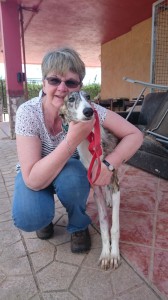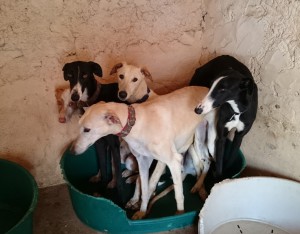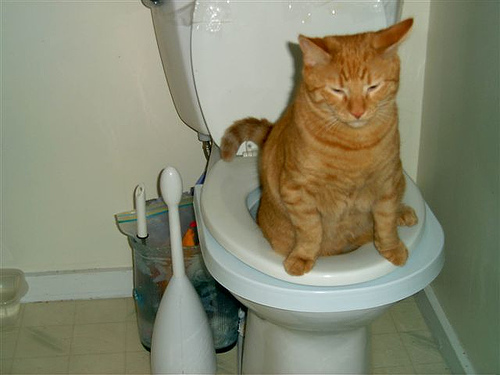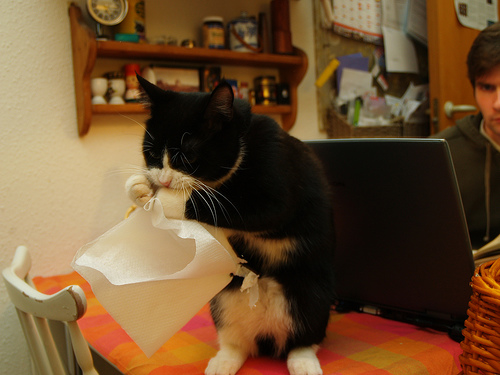Is Your Dog is Scared of the Vet?
It’s quite common for dogs to be scared of going to see the vet. If this is the case for your pet, it can be a traumatic experience for both of you. Dogs that are frightened of what may lie in wait can tremble, pant, struggle, attempt to flee and become aggressive once they realise where they are. This fear could kick in when they get to the examination table itself or it may be so extreme that they refuse to get out of the car and go inside.
In an ideal world, it’s always better to be able to prepare your dog for their very first visit to the vet so that they are not afraid for future trips but even if they are already scared, it is possible to encourage your dog to tolerate and accept visits to the vet.
Why It Happens
For most dogs, they are frightened because they fear that the experience will be traumatic. This isn’t helped by the fact that most appointments will involve physical examinations and maybe blood tests, which can be confusing and uncomfortable for pets. If your pet is visiting the vet because they are already feeling ill (rather than a routine check-up), these type of factors can reinforce the idea that going to the vets is not a nice experience.
Helping Your Dog to Overcome Their Fear
You may worry that it’s too late to change your dog’s perceptions of going to the vet but in most cases, you can help them to be less anxious about visits. Here are some tips for tackling your dog’s fear of the vet.
Make Social Calls
Most dogs only go to the vet once or twice a year for check-ups or if something is wrong outside of this. They therefore come to associate the vet surgery with unpleasant experiences such as examinations and tests. Making random social visits to the surgery can help to break this perception, especially if they are given fuss and treats by staff and can see the place in a different light. In time, they may build a positive association, rather than a negative one.
Dog Appeasing pheromones
Many dogs react well to the use of dog appeasing pheromones. These pheromones replicate the pheromones that a mother dog naturally emits to her puppies to calm and comfort them. Using an Adaptil collar in the lead up to, and during, a trip to the vet may help reduce their anxiety.
‘Practice’ Examinations at Home
Vet visits can be unnerving for your dog because they are not used to the hands-on nature of a physical examination. You can reduce this confusion by performing ‘mock’ examinations at home. This can be as simple as spending some time each day on checking their ears, eyes, mouth and other body parts so that they can get used to the idea of this happening. Give them treats throughout to make this a more enjoyable experience.
Use Treats
Treats can be used to build a more positive association to help your dog to feel better about being at the vets. You can give them treats when they get on the examination table, for example., particularly if you have been doing ‘mock’ examinations at home and using treats as a reward for complying.
Can You Be Present?
Depending on the surgery, it may be the norm to take pets into another room to do blood tests and other simple procedures. This separation from you can cause more distress for your dog so it’s worth asking if you can be there with them throughout to reduce their anxiety.
While your vet and other staff are trained to handle pets, your dog may be more comfortable if you restrain them (if you know how best to do this), with back up support from them if needed. The main exception to this is if you’re feeling apprehensive and stressed about the visit. Your dog is likely to pick up on your anxiety, which can then increase their own distress.
If All Else Fails
If your dog is still troubled by going to see the vet, it may be worth consulting a behavioural specialist – especially if they are aggressive during visits or are showing extreme signs of fear that interferes with the ability to carry out examinations and tests.
[Photo Credit: pmarkham]


 Just as in humans, allergies can cause irritated, itchy skin in both cats and dogs. Many dogs suffer from allergies – with fleas, house dust mites and pollens being among the most common allergens; which means signs may vary with the seasons, being particularly bad in spring and summer. A proportion of the canine population also suffer from atopy: an allergic, very itchy skin condition which is in part a genetic abnormality and also a problem with the skin’s natural defence. There are three areas to consider when helping to relieve itchy skin:
Just as in humans, allergies can cause irritated, itchy skin in both cats and dogs. Many dogs suffer from allergies – with fleas, house dust mites and pollens being among the most common allergens; which means signs may vary with the seasons, being particularly bad in spring and summer. A proportion of the canine population also suffer from atopy: an allergic, very itchy skin condition which is in part a genetic abnormality and also a problem with the skin’s natural defence. There are three areas to consider when helping to relieve itchy skin:





